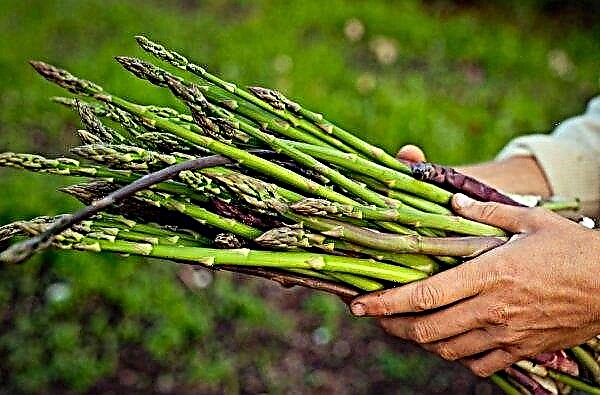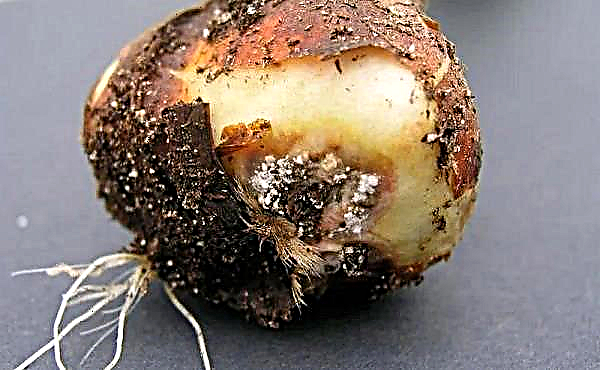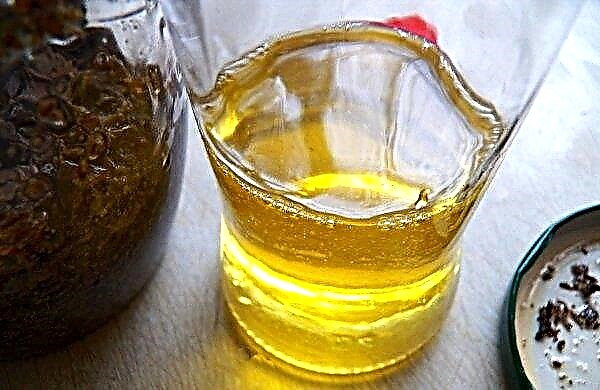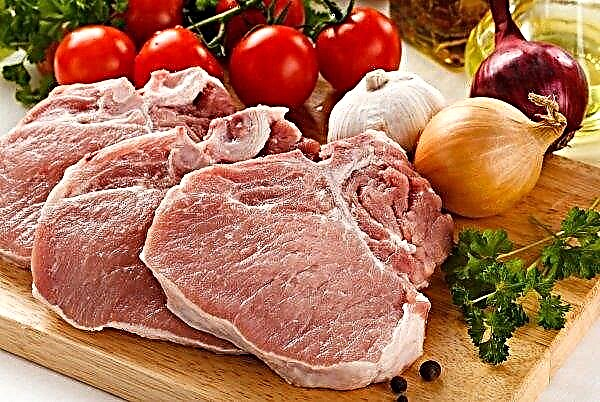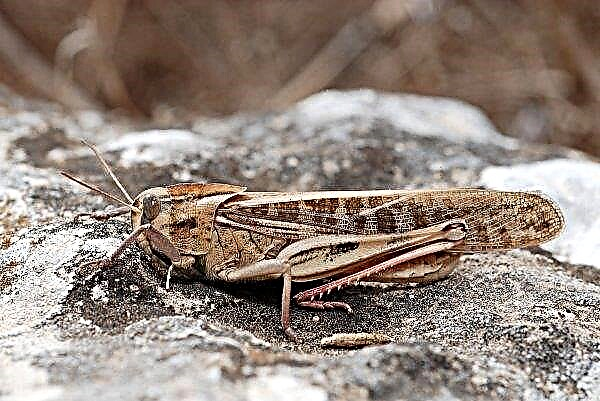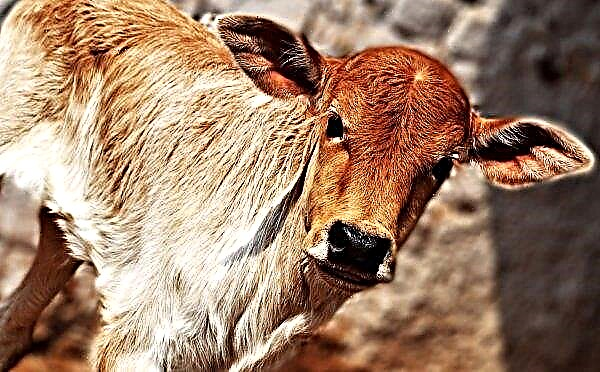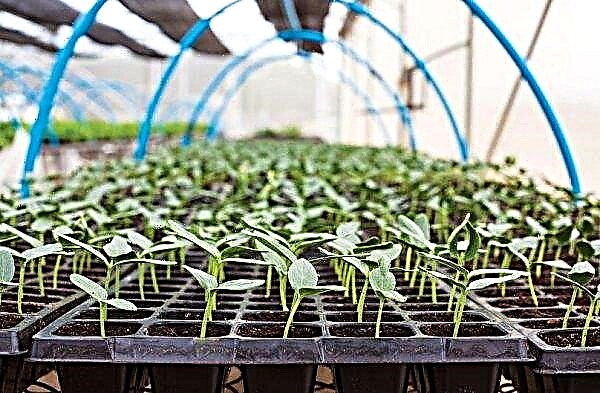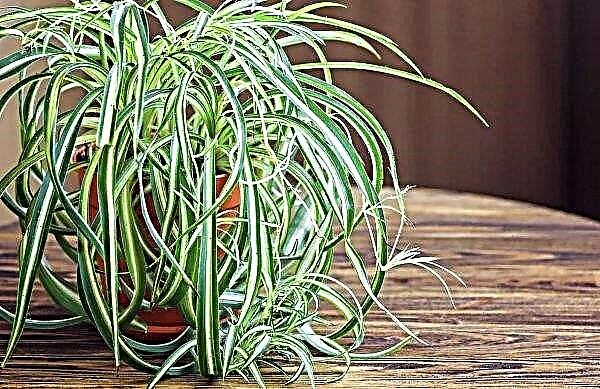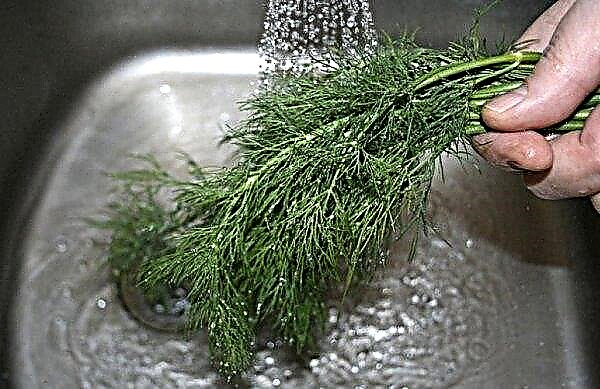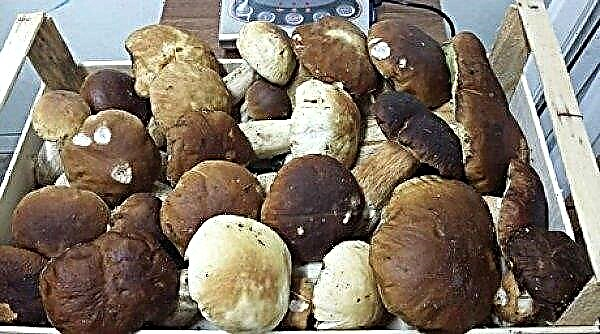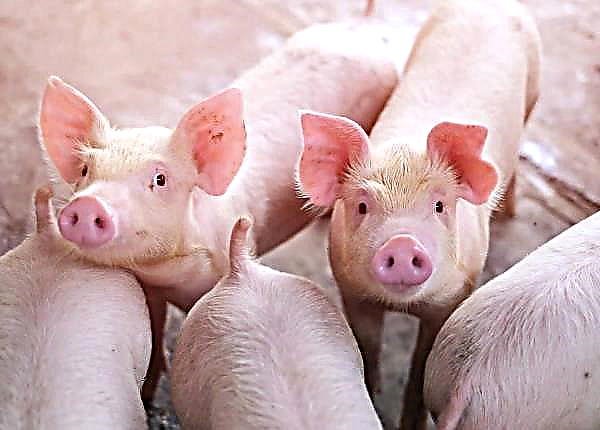In many countries, potatoes are called second bread, since it is one of the main components of the daily diet, so when growing this fruit, it is important to choose a variety that will combine high yield and excellent taste characteristics. One of these varieties is Zekura potatoes. In this article, we consider a description of this variety, the rules for planting and growing it, as well as the intricacies of the care and treatment of possible diseases.
History of selection and distribution

Zekura variety was bred in Germany in the early 90s of the last century.
Breeders of the German company Solana GmbH & amp; CO KG ”, who worked on the creation of this variety, wanted to get early ripe and disease-resistant potatoes with high yields and excellent taste.
Initially, it was assumed that Zekur potatoes will be grown only in Central Europe, but the plant adapts well to adverse climatic conditions and is grown even in Siberia and Kazakhstan.
Description and characteristics of the variety
Zekura potato belongs to the table varieties and has gained great popularity among gardeners due to its high yield, unpretentiousness to environmental conditions and excellent taste of fruits.
Did you know? 100 g of potatoes contain only 90-100 kcal, and the tubers themselves are 80% water.
Consider the characteristics of this variety:
- Zekura bushes are up to 35 cm tall, upright and compact, do not take up much space in the garden.
- The leaves of the bush are small, have a light green color.
- The bush blooms in late June or early July in small red-violet flowers, which are collected in small corollas.
- The tubers underground are compactly placed at a shallow depth.
- The fruits have a slightly elongated shape and are covered with a smooth yellow peel with small eyes.
- The flesh of the potato is colored yellow. It has excellent palatability and contains about 15–18% starch.
- The variety is medium early, the crop ripens within 90-100 days.
- From one bush you can collect up to 20 tubers, their weight is 60-150 g. Productivity can reach 550 kg / ha.
- Zekura variety is resistant to many diseases, under the right storage conditions the tubers remain tasty and retain an attractive appearance for 6 months.

Advantages and disadvantages
The size of the harvest of Zekur potatoes, as well as the timing of its ripening, largely depend on environmental conditions. But, despite the growing conditions, this variety pleases with a large number of positive qualities.
- The benefits of potatoes Zekura include:
- high productivity;
- early ripening of tubers;
- unpretentiousness to climate conditions;
- resistance to diseases;
- ease of cultivation;
- preservation of varietal qualities for several years;
- an almost complete absence of green and rotten tubers in the nest;
- excellent taste and appearance of the fruit;
- good keeping quality, long-term presentation of the presentation;
- due to its medium digestibility, tubers are well used for mashed potatoes, vegetable stews, soups and frying.
Important! In order for all the pluses of the variety to appear with maximum strength, weeds must be removed in a timely manner around the potatoes and enrich the soil with nutrients.
Over the entire existence of this variety, only one drawback was noticed. The disadvantage of Zekura is that in a cold or arid climate, tubers may have a slightly smaller size - about 70 g. Other negative qualities have not yet been found in this variety.
Planting and growing potato varieties
Due to the large number of advantages, the Zekura variety is often selected for cultivation not only in small private households, but also on an industrial scale.

Potatoes do not require complicated care, are relatively not picky about temperature and watering, so growing it is simple and profitable. It is enough to observe the planting dates and some simple recommendations for caring for plants. Let's consider them in more detail.
Optimal terms and conditions
Planting potatoes Zekura on the site is recommended in the second half of May, in order to exclude the possibility of night frosts. The soil at a depth of 15 cm should be warmed up to at least + 8 ° C and moderately moist. This will accelerate the germination of planting material and save it from decay.
Did you know? In 1995, on board the American shuttle Columbia, the first experiment was conducted on growing potatoes in space, which ended in success.
Crop rotation rules
It is best to plant this variety in that section of the garden where perennial herbaceous plants, lupine, cereals and legumes, flax or mustard were grown before. A good crop of large tubers can also be obtained if the plant is planted in areas where zucchini, garlic, cucumbers, cabbage or beets grew last year.

It is not recommended to plant Zekur potatoes on the same site for two consecutive years - this will lead to a decrease in plant productivity and a decrease in the size of tubers.
Soil requirements
Zekura does not have special requirements for soil density or composition. This potato can be grown in soil with different moisture levels. But before planting the tubers, you need to prepare the land on the site. This procedure not only helps to make the soil more loose, but also adversely affects the roots of weeds and the larvae of possible pests.
Recommendations for preparing a garden for planting Zekur potatoes are described below:
- in the fall, the earth in the garden must be dug to a depth of about 30 cm;
- make organic fertilizers to enrich the soil with nutrients. As a top dressing, manure, peat, humus, sawdust or wood ash are used;
- in the spring, you need to plow the site again and loosen the soil on it before planting.
To get a good harvest of potatoes, you can make in the fall for every 1 square. m of soil 100 g of ash and 3 kg of humus.
Preparing planting material
Zekura potatoes are characterized by good germination, and with timely planting, problems with the appearance of sprouts will not arise.

General guidelines for preparing potato tubers for planting are:
- medium-sized tubers that were selected for planting in the fall after harvest should be stored separately from the rest of the potatoes;
- during the winter, planting material must be periodically inspected and removed spoiled fruits;
- a couple of weeks before the planned planting, the tubers can be spread out in one layer in a bright and warm room, so that the process of sprout formation takes place more actively.
Important! Variety Zekura does not require specific preparation and processing of planting material.
Landing technology
Zekura potatoes have a simple planting technology that even a beginner gardener can handle. In order for the planting material to sprout quickly, it is enough to follow some standard recommendations for planting it.
Step-by-step instructions for landing Zekura are described below:
- Dig small holes in the soil 10 cm deep, placing them in a straight line on the site.
- The distance between the holes should be about 50 cm, between the rows - 35 cm.
- In each well, put some wood ash or humus for the active germination of tubers.
- Lower the planting material into the hole so that the sprouts stick up. Sprinkle holes with earth.
It is recommended to periodically update the planting material of this variety so that the potatoes do not lose their positive varietal qualities over time.
Features of potato care after planting
The Zekura potato variety is unpretentious for agricultural cultivation and does not require much time from the gardener. To achieve the maximum yield, consisting of large and beautiful tubers, it is enough to provide the potato with a standard care, consisting of weeding the weeds, processing the soil around the plant and proper watering.
Did you know? First place in the world for potato production is China. About 80 million tons of product are grown there annually.
The basic rules for caring for Zekura are described below:
Pests and diseases
With proper care, Zekura potatoes are highly resistant to many diseases. The plant is not afraid of late blight, cancer, rot and common scab, but the bush is not safe from the attack of pests, so it is important to identify them in time and take the necessary actions to eliminate insects.
A list of possible pests of Zekura potatoes is presented below:
- Colorado beetle. Insects lay eggs on the tops of potatoes, from which larvae hatch, eating the leaves of the plant, so you need to periodically inspect the bushes and sprinkle wood ash between them.
 Between the rows of bushes you can plant a calendula - its smell will frighten off insects. If the Colorado potato beetle appeared in large numbers, then to save the crop, the bushes are treated with insect chemicals (for example, Corado, Bitobaxicillin).
Between the rows of bushes you can plant a calendula - its smell will frighten off insects. If the Colorado potato beetle appeared in large numbers, then to save the crop, the bushes are treated with insect chemicals (for example, Corado, Bitobaxicillin). - Wireworm. This pest lives in the soil and feeds on potato tubers. Its appearance may be signaled by the wilting of the ground green part of the bush.
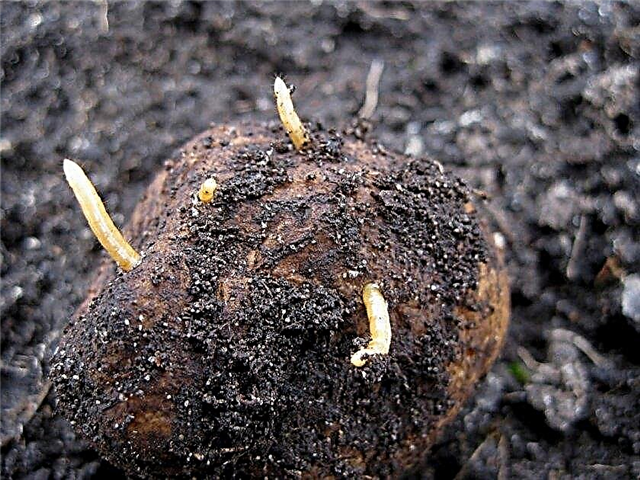 To prevent the appearance of wireworms, legumes, mustard, buckwheat or clover are planted around the site. When larvae appear on the site, the ground between the potato bushes should be sprinkled with lime or wood ash. You can put pest traps made of ordinary cans buried in the ground right up to the neck. Inside the jar, you can put any fresh vegetable, the smell of which will attract larvae. Every 2-3 days, traps inspect, pull out pests from them and destroy them. With a large number of larvae, chemical control agents are used (for example, Prestige, Aktara).
To prevent the appearance of wireworms, legumes, mustard, buckwheat or clover are planted around the site. When larvae appear on the site, the ground between the potato bushes should be sprinkled with lime or wood ash. You can put pest traps made of ordinary cans buried in the ground right up to the neck. Inside the jar, you can put any fresh vegetable, the smell of which will attract larvae. Every 2-3 days, traps inspect, pull out pests from them and destroy them. With a large number of larvae, chemical control agents are used (for example, Prestige, Aktara). - Potato scoop. Butterflies themselves are not dangerous for the plant, but they lay eggs, from which gluttonous larvae appear. They destroy potato tops and can lead to the loss of part of the crop.
 To prevent the appearance of scoops in the autumn, you need to carefully dig the earth in the garden and plant potatoes away from tomatoes. If caterpillars appeared on the bushes, then they are collected manually. With a large number of pests, chemical insecticides are used.
To prevent the appearance of scoops in the autumn, you need to carefully dig the earth in the garden and plant potatoes away from tomatoes. If caterpillars appeared on the bushes, then they are collected manually. With a large number of pests, chemical insecticides are used. - Bear This pest lives in the upper layers of the soil and can harm young potato sprouts or already ripened tubers, gnawing them from all sides.
 To prevent the appearance of the bear around the site, you can plant garlic or coriander, their pungent smell repels the pest well. To prevent the bear from entering the area, ditches about 60 cm deep are dug around the perimeter and filled with gravel. If the pest moves are noticed in the soil on the plot, then they must be poured with an aqueous solution of kerosene (10 ml of the substance per 1 liter of water).
To prevent the appearance of the bear around the site, you can plant garlic or coriander, their pungent smell repels the pest well. To prevent the bear from entering the area, ditches about 60 cm deep are dug around the perimeter and filled with gravel. If the pest moves are noticed in the soil on the plot, then they must be poured with an aqueous solution of kerosene (10 ml of the substance per 1 liter of water).
Important! To prevent the appearance of all the described types of pests on potatoes, all weeds must be removed, taken out of the garden and buried deep in the ground.
Harvesting and storage
Zekur potatoes are harvested from the second half of August until mid-September. In winter, tubers are most conveniently stored in a basement or cellar at a temperature of + 2 ° C and an air humidity of at least 75%.
Fruits are placed in bags, wooden boxes with holes for ventilation or in nets. Under such conditions, they can be well stored for at least 6 months.

Before laying the fruits for storage, it is necessary to carry out the following actions:
- to clear tubers from the earth and to dry them;
- remove damaged and rotten fruits;
- sort the crop by size, selecting medium tubers for planting.
Zekura potato variety is very easy to grow and does not require careful care or specific climatic conditions. Taste qualities of tubers are at a height, and the plant's productivity will delight even the most demanding gardener. To do this, it is enough to follow the simple rules for growing and caring for the plant described in the article.

 Between the rows of bushes you can plant a calendula - its smell will frighten off insects. If the Colorado potato beetle appeared in large numbers, then to save the crop, the bushes are treated with insect chemicals (for example, Corado, Bitobaxicillin).
Between the rows of bushes you can plant a calendula - its smell will frighten off insects. If the Colorado potato beetle appeared in large numbers, then to save the crop, the bushes are treated with insect chemicals (for example, Corado, Bitobaxicillin). To prevent the appearance of wireworms, legumes, mustard, buckwheat or clover are planted around the site. When larvae appear on the site, the ground between the potato bushes should be sprinkled with lime or wood ash. You can put pest traps made of ordinary cans buried in the ground right up to the neck. Inside the jar, you can put any fresh vegetable, the smell of which will attract larvae. Every 2-3 days, traps inspect, pull out pests from them and destroy them. With a large number of larvae, chemical control agents are used (for example, Prestige, Aktara).
To prevent the appearance of wireworms, legumes, mustard, buckwheat or clover are planted around the site. When larvae appear on the site, the ground between the potato bushes should be sprinkled with lime or wood ash. You can put pest traps made of ordinary cans buried in the ground right up to the neck. Inside the jar, you can put any fresh vegetable, the smell of which will attract larvae. Every 2-3 days, traps inspect, pull out pests from them and destroy them. With a large number of larvae, chemical control agents are used (for example, Prestige, Aktara). To prevent the appearance of scoops in the autumn, you need to carefully dig the earth in the garden and plant potatoes away from tomatoes. If caterpillars appeared on the bushes, then they are collected manually. With a large number of pests, chemical insecticides are used.
To prevent the appearance of scoops in the autumn, you need to carefully dig the earth in the garden and plant potatoes away from tomatoes. If caterpillars appeared on the bushes, then they are collected manually. With a large number of pests, chemical insecticides are used. To prevent the appearance of the bear around the site, you can plant garlic or coriander, their pungent smell repels the pest well. To prevent the bear from entering the area, ditches about 60 cm deep are dug around the perimeter and filled with gravel. If the pest moves are noticed in the soil on the plot, then they must be poured with an aqueous solution of kerosene (10 ml of the substance per 1 liter of water).
To prevent the appearance of the bear around the site, you can plant garlic or coriander, their pungent smell repels the pest well. To prevent the bear from entering the area, ditches about 60 cm deep are dug around the perimeter and filled with gravel. If the pest moves are noticed in the soil on the plot, then they must be poured with an aqueous solution of kerosene (10 ml of the substance per 1 liter of water).